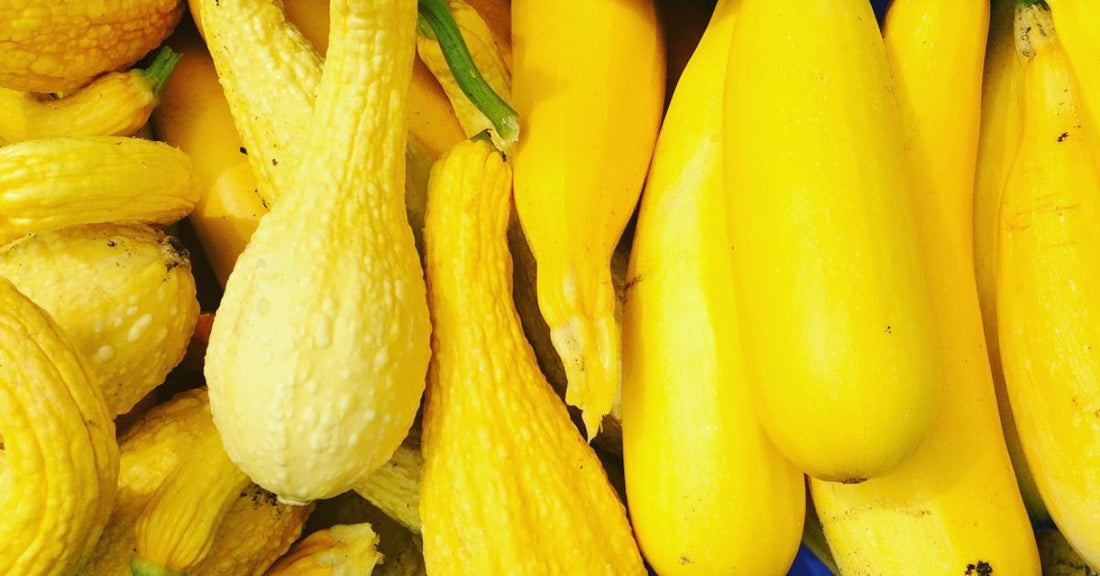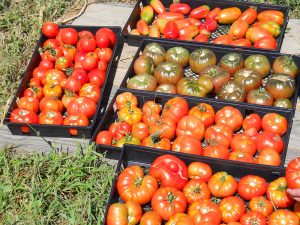
Complete Guide to Growing and Harvesting Heirloom Squash
05:39 AMHeirloom squash is a popular addition to any home garden and a great addition for sustainable agriculture. With its rich heritage, diverse shapes, and unmatched flavors, gardeners worldwide focus on cultivating these unique plants.
Growing heirloom squash comes with its unique rewards and challenges. To obtain the best results, you’ll need to understand the steps involved, from seed selection to harvest. Whether you're a seasoned gardener or a beginner just starting out, this complete guide to growing and harvesting heirloom squash will equip you with all the knowledge you need.
Selecting the Right Squash Variety
Choosing the right heirloom squash variety is the first step toward a successful gardening season. Consider your local climate, space availability, and personal preferences in terms of taste when making your choice. Research different varieties to find one that thrives in your specific growing conditions.
Understanding the unique characteristics of various heirloom squash varieties can help you select the perfect one. Some squash varieties thrive in cooler climates, while others prefer warmer, extended growing seasons. Paying attention to these details ensures a productive and healthy garden.

Starting with Quality Seeds
To grow vibrant heirloom squash, start with high-quality wholesale heirloom seeds that have excellent growth potential. Purchasing from reputable suppliers like ARK Heirloom Seeds ensures that the seeds are true to type and disease-free. This foundation sets the stage for an abundant harvest season.
Inspect your seeds before planting to ensure their viability and integrity. Proper storage before use is also important, as it prevents degradation of seed health and germination rates. Always select seeds adapted to your local growing conditions for optimal results.
Preparing Your Garden Soil
Healthy soil is the foundation of a thriving heirloom squash garden. Begin by testing the soil to measure its pH levels and nutrient content for optimal growth. Adjust the soil as necessary by adding organic compost and fertilizers to ensure a proper nutrient balance.
Loose, well-draining soil with adequate aeration is vital for root development and overall plant health. Avoid using compacted or overly wet soil, as this could hinder growth and lead to root rot. Consistent soil care helps build strong foundations for your heirloom squash plants.
Planting Heirloom Squash Seeds
The timing and placement of your seeds can drastically affect the success of your garden. This includes:
- Wait until the soil temperature reaches at least 60°F to ensure proper germination.
- Select a planting location with sufficient space to allow each plant ample room to grow.
- Plant the seeds directly in the soil or start them in biodegradable pots for easy transplanting.
- Approach the planting process with patience and care to set the stage for a successful growing season.
Watering Your Heirloom Plants
Adequate and consistent watering is essential for healthy heirloom squash plants. Establish a watering schedule that aims to keep the soil evenly moist without overwatering, preventing root rot. Early morning watering is ideal, as it allows plants to absorb moisture throughout the day.
Mulching can reduce evaporation and help retain soil moisture, contributing to overall plant health. Monitoring weather conditions lets you adjust watering according to rainfall or temperature changes. Proper hydration keeps your plants strong and productive.
Pest and Disease Management
Protecting heirloom squash plants from pests and diseases ensures a healthy and productive season. Inspect plants regularly for signs of common problems such as squash bugs, powdery mildew, or vine borers. Catching issues early prevents them from spreading and damaging all your plants.
Quality pest management practices can improve control methods without harming beneficial organisms. Solutions like natural insecticides or companion planting help combat pests while promoting ecological balance in your garden. Proper vigilance saves crops from preventable damage.
Fertilizing for Optimal Growth
Supplementing soil nutrients with the right fertilizers enhances the growth and yield of your heirloom squash plants. Organic fertilizers, such as compost tea or manure, provide essential nutrients without introducing harmful chemicals. Apply fertilizers according to the growth stage of your plants.
Avoid over-fertilizing, as this could lead to excessive foliage growth at the expense of fruit production. Balanced feeding schedules at critical phases ensure plants develop fully and produce high-quality squash. Proper fertilization practices improve yield and quality.
Training and Pruning
Training and pruning your plants guide growth patterns and improve air circulation around the stems. Use stakes or trellises if growing vining varieties to prevent plants from sprawling across the ground. This keeps foliage elevated and less susceptible to diseases.
Prune damaged or overcrowded foliage to focus energy on healthy growth and fruit production. Regular upkeep improves plant health and maximizes the garden's yield over the growing season. Hands-on care ensures long-lasting productivity.

Harvesting Heirloom Squash
Proper harvesting techniques help preserve the texture and taste of your heirloom squash. Harvest summer squash while tender and small, but wait until winter squash fully matures for robust flavor. Use sharp tools, such as knives or pruning shears, to prevent damaging the plant.
Inspect fruits regularly to ensure you harvest them at the optimal time, which varies depending on the variety. Enjoying freshly picked squash marks the reward for all your hard work and patience. Timing your harvest well maximizes the delicious results of your gardening efforts.
Saving Seeds for the Next Season
Saving seeds from your heirloom squash plants is a sustainable way to plan for future gardens. Select the best fruits from healthy plants to ensure high-quality seeds. Clean and dry the seeds thoroughly to prepare them for storage.
Store the seeds in a cool, dark, and dry location to maintain their viability. Proper labeling helps keep track of varieties for next season. Seed saving reduces costs and sustains the unique characteristics of your heirloom crops.
Growing and harvesting heirloom squash can be a deeply rewarding experience, blending traditional gardening practices with modern sustainability. By carefully selecting a suitable variety for your growing zone and preparing nutrient-rich, well-drained soil, you set the foundation for healthy plants.
Consistent watering, balanced fertilization, and vigilant pest management through natural methods are essential for robust growth. Supporting plants with proper spacing and maintaining healthy soil contribute to optimal yields.
When it's time to harvest, look for signs of maturity, such as hardened skin and a uniform color, to ensure the fruits are ready to store or enjoy. From planting to harvest, tending to heirloom squash offers lessons in patience, care, and the importance of preserving time-honored agricultural traditions.










